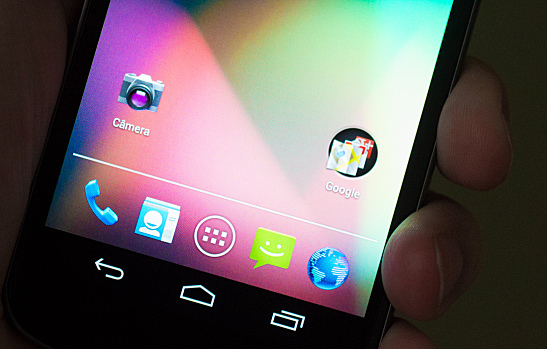Jelly Bean tops the Google Android team’s latest device share statistics by a large margin. Versions 4.1.x – 4.2.x held 59.1 percent of the Android system’s share, according to data collected from phones that used the Google Play Store app during a 7-day period ending January 8. The data reveals a slight uptick in Jelly Bean usage, from 54.5 percent in December 2013.
The Version Distributions
The report also includes a breakdown of each version of Android, starting with version 2.2, code-named Froyo. This version only has 1.3 percent distribution, followed by Gingerbread version 2.3.3–2.3.7, with a sizable distribution of 21.2 percent. Honeycomb, version 3.2, had the lowest distribution at only 0.1 percent, while Ice Cream Sandwich version 4.0.3-4.0.4 had a 16.9 percent device share distribution. The latest version, KitKat 4.4, is currently only running on Google-issued hardware and therefore recorded a mere 1.4 percent distribution.
Jelly Bean 4.1.x was released on July 9, 2012, and was followed by version 4.2 on November of the same year. The latest Jelly Bean update dropped on July 24, 2013, making it the longest-running version to date. KitKat dropped on October 31, 2013, ending the Jelly Bean update period.
Version 4.1.x has the largest distribution among the three Jelly Bean updates, at 35.9 percent, followed by version 4.2 at 15.4 percent distribution at the API level of 17.
The report noted that “because this data is gathered from the new Google Play Store app, which supports Android 2.2 and above, devices running older versions are not included. However, in August, 2013, versions older than Android 2.2 accounted for about one percent of devices that checked in to Google servers (not those that actually visited Google Play Store).”
KitKat and Moving Forward
While it is still early to judge how well KitKat will perform, 2014 will likely see more third-party devices ship with a pre-installed KitKat version, and KitKat updates to older models are expected throughout the year. All of these will no doubt see this version gain more traction and increase its device share.
Currently, Android fragmentation is considered one of the challenges hindering the adoption of later version releases. A lot of people are still using version 2.3, which was released in 2010, making it difficult for developers to support every Android device, while some newer devices are still shipping with the Gingerbread version. Fortunately, Google hopes to end this fragmentation with KitKat, which has been hailed for its ability to run even on low-end devices.
Which version of Android are you currently running on your device? Do you feel the need to upgrade?
Image Courtesy of Wikimedia Commons
[cf]skyword_tracking_tag[/cf]

